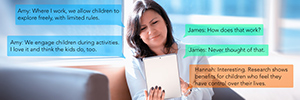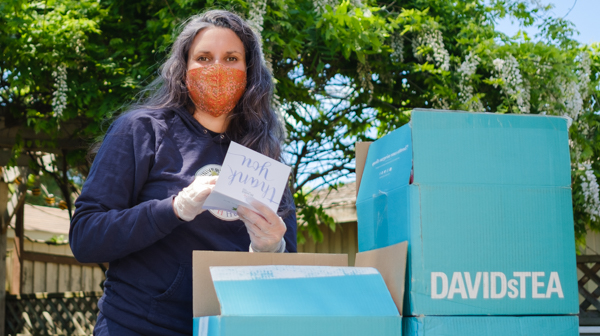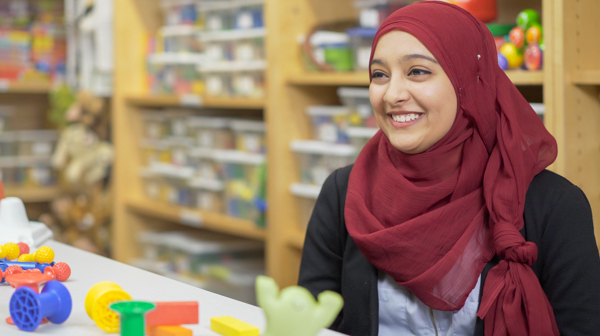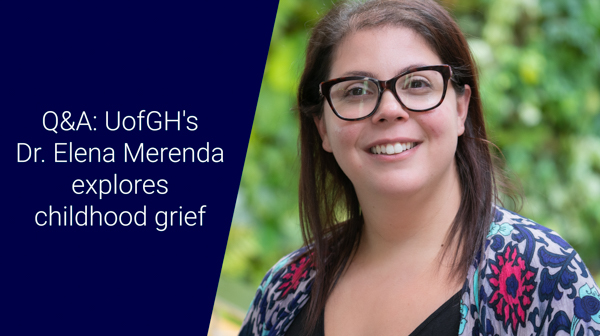- Future Students
- Current Students
- Faculty
- Staff
- Alumni
- Others
Children’s artwork provides insight into pandemic experiences

It's a way to articulate their feelings and a way to express their perspective. When you look at the artwork, there are nuances. They're able to express themselves and their inner world."
A team of researchers at the University of Guelph-Humber wants to better understand the perspectives, views and experiences of children during COVID-19. To do so, they are collecting and analyzing artwork from youth across Canada.
Led by UofGH Early Childhood Studies Program Head Dr. Nikki Martyn, the study aims to provide authentic insight into adolescents’ thoughts and feelings.
“One of the things that's always been important to me is hearing the child's voice and perspective,” Dr. Martyn said. “Often in society, we tend to not hear or value the perspective of children and teens, but they have so many interesting things to say.”
For children who are still learning to articulate their emotions, art and play can be one of the best forms of expression.
“It's a way to articulate their feelings and a way to express their perspective,” Dr. Martyn explained. “When you look at the artwork, there are nuances. They're able to express themselves and their inner world.”
Since beginning the Child Art study in September 2020, the team has received artwork from across the country. The study, which is open to children ages 2-18, has gained particular traction in the teenage demographic, and themes are already emerging.
“Across the board, there's no doubt that there's increased anxiety and increased worry,” said Dr. Martyn. “Developmentally, they are in a very vulnerable state anyway. Peer relationships are heightened and become so important. Then, not being able to connect in a way that's meaningful to them, it's that much more painful for the developmental stages that a teenager is feeling or living in.”
Dr. Martyn hopes the study will help society gain a deeper understanding of children’s experiences during this historic time, as well as the implications for the future.
“When we think about this as a societal shift, this will impact the kids, and this will impact who they become when they're adults.”
A hands-on research experience
Joining Dr. Martyn on the research team are several third- and fourth-year ECS students. With fewer practicum placements available due to COVID-19 restrictions, the research study was a perfect opportunity for students to explore a new area of practice.

Photo courtesy of Emilia Biasi

Photo courtesy of Victoria Obot

Photo courtesy of Olivia Palumbo
The student research team meets regularly with Dr. Martyn to discuss and share their perspectives and thoughts on the artwork. They have also been focusing on recruitment efforts. Among their responsibilities are researching schools and early childhood education centres across Canada and creating content for social media—a platform that has helped the study reach a wider audience.
“I'm blown away by their perspective and their enthusiasm and initiative,” said Dr. Martyn.
Fourth-year ECS student Emilia Biasi has appreciated getting a first-hand look into the research process.
“It gave us this whole new perspective on how we can help support children, even in the toughest of times,” said Biasi. “It's been so positive and rewarding and a great learning experience."
Victoria Obot, a fourth-year ECS student, said the experience has been eye-opening and provided further insight into early childhood education.
“This project has allowed me to increase my understanding of the current issues that affect children within Canada, which I know will prepare me for my future practice. Some of these issues include feelings of hopelessness, isolation and dread,” Obot said. “I am grateful that this research experience has allowed me to gain a deeper understanding of the field."
For Olivia Palumbo, a fourth-year ECS student, working on the project has sparked a new interest and passion.
“There's a lot of loneliness being brought up and a lot of isolation that has come with COVID. It's just heartbreaking to think that's the common theme that we're getting,” Palumbo said. “This project has really changed my mindset on things, and I know that now I want to focus on mental health in adolescents."
Towards support and positivity
Dr. Martyn is in the process of coding the artwork with emotive terms, such as anxiety, protection, fear, frustration and love. Through a qualitative analysis, Dr. Martyn hopes to identify common themes and patterns that will provide insight into future generations.
“I'm not sure what the outcome is going to be for this generation, but the only way for us to really be able to forecast or anticipate what might be the outcome is to understand what children are actually experiencing,” Dr. Martyn explained.
As the practicum students continue working on the study, they hope to share more positive outlooks and find new ways to virtually connect with and support youth.
“We don't have that impact where we can reach out and say, ‘Hey, don't stress about it.’ So it's finding a very broad way of discussing with them and trying to be that support that they really need,” Palumbo said.
“We've seen really dark, negative emotions that are being conveyed through the art,” Biasi added. “If we start changing that frame of mind and offer that support through the social media accounts that we start up, then that would be really neat to see.”
The study will run the duration of the pandemic, with the goal of capturing how experiences and perspectives change and evolve. Reflecting on the experience so far, Dr. Martyn is appreciative of all the artwork and stories that have been submitted.
“People have shared quite a bit of very lovely work with us—really beautiful things and beautiful inner experiences,” Dr. Martyn said. “I'm incredibly humbled and touched by it.”







